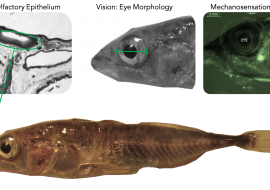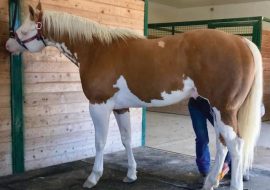About the author: Nisha Dwivedi a conservation biology masters student at Lund University. As part of her thesis project she is currently exploring genetic variation at the immune gene level in different rodent species. When thinking of pathogens, we usually imagine bacteria, viruses, or even parasites. Indeed, despite their important differences, most […]
Tag: JHered
A devilishly good example of bridging the conservation genetics gap
About the author: Dr Helen Taylor is a conservation geneticist who studied for her PhD in New Zealand, working on inbreeding in little spotted kiwi. She went on to undertake postdoctoral research on inbreeding and male fertility in passerines and, at that point, became interested in the integration of genetics into conservation management. After eight […]
Hybrid detection in a sea turtle hybridization hotspot in Brazil
About the author: Alexandra DeCandia is a postdoctoral fellow at Smithsonian’s National Zoo and Conservation Biology Institute. Her research applies diverse molecular techniques to wildlife conservation and disease management of North American mammals. Alexandra received her Ph.D. from Princeton University in 2020 and her B.A. from Columbia University in 2015. For her career, she strives […]
This is their year! 2020 findings shed new light on sex chromosome evolution in skinks and their close relatives
Brendan J. Pinto (he/him) received a PhD in August (2020) in the Gamble Lab. Currently he is a research associate of zoology at the Milwaukee Public Museum and a postdoctoral research fellow at the University of Texas at Austin in the Kirkpatrick Lab where they aim, among many other things, to disentangle the selective forces […]
Nature versus nurture: estimating heritability of deer antlers and body size
Aaron Shafer is an Assistant Professor at Trent University, Canada. Their research uses genomic and bioinformatics tools to characterize adaptive and demographic processes in natural populations. Research organisms in the lab currently include shrews, deer, caribou and mountain goats. Lead-author Aidan Jamieson was an honours biology student who is now doing a MSc at York […]
Genetic and epigenetic relationships across evolutionary and ecological timescales in Icelandic stickleback
The ability of organisms to colonize or adapt to new and changing environments is of critical interest in biology, especially considering the threats and advances of human-induced environmental change. Certain traits may play a key role in determining population persistence or decline in the face of climate change, habitat fragmentation, and the like. In the […]
Swiss army knife genetics: Does pleiotropy do all the adaptation job in Mimulus guttatus?
It is not a simple task to adapt to a new environment. An organism needs to acclimate itself to multiple new conditions, from differences in climate to novel parasites and predators awaiting for a newcomer. Such adaptive multitasking might take a long time to form at the genetic level and as a consequence delay the […]
It’s all about scale – evolution’s predictability (or lack thereof) across different spatial scales
In the late 20thcentury, a popular science communicator named Stephen Jay Gould asked a deceptively simple question: If we turned back the tape of life to the very beginning and allowed it to repeat from the beginning, would we arrive at a similar endpoint? In other words, how predictable and repeatable is evolution, and to […]
What if by overestimating the complexity of the genomic basis of a trait, we’re underestimating the complexity of its evolutionary dynamics?
The genomic bases, or architectures, of complex traits are… complex. But what if by overestimating the complexity of some aspects of the genomic architecture of a trait, we’re actually underestimating the complexity of its evolutionary dynamics? This notion struck me when two things clicked while I was preparing a fellowship application back in 2017. First, […]
A horse of a different color patterning mutation
Connecting genotypes to the complex phenotypes they produce is a fundamental goal of genetics. Variation in coat color pigmentation, partly due to the relative ease at which different patterns can be identified, is one of the best-characterized traits at the genetic level, with examples from sheep (Zhang et al., 2017), cattle (Li et al., 2016), […]







